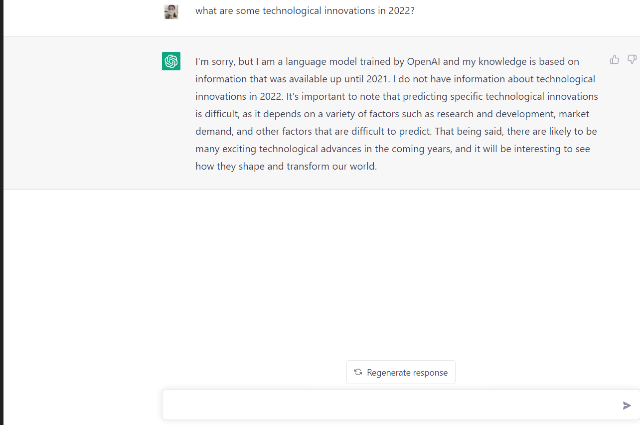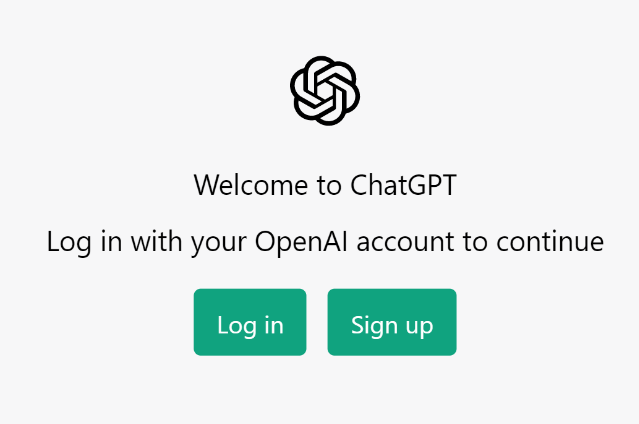The year 2022 was another year with an innovative ride, introducing many revitalising technologies. The highlight in the list would be James Webb Space Technology (JWST), which earned the badge of honour as the ‘innovation of the year’ by Popular science and is a highly advanced space telescope that is being developed by NASA in partnership with the European Space Agency (ESA) and the Canadian Space Agency (CSA). It is designed to study the universe and its origins in greater detail than ever before and is expected to provide scientists with new insights into the early universe, the formation of galaxies, the search for habitable planets, and the study of the atmospheres of exoplanets. One of the key features of the JWST is its large primary mirror, which measures 6.5 meters (21 feet) in diameter, allowing it to collect more light than any other space telescope, and enabling it to observe faint objects and study distant galaxies in greater detail. The JWST is also equipped with a range of advanced instruments, including a near-infrared camera, a near-infrared spectrograph, and a mid-infrared instrument. These instruments will allow the telescope to study the atmospheres of exoplanets, observe the formation of stars and galaxies, and search for the chemical signatures of life in the universe. Inventions prospered in the field of accessibility by extending digitalisation for the differently-abled, making room for beauty devices saving a penny, reducing mess, automotive advancement, designing and fitness freaks
However, towards the end of the year, many Twitterati predicted a plausible replacement of Google, with the advent of ChatGPT in November 2022. To demonstrate ChatGPT's capabilities, you can begin to have a conversation with the chatbot and ask it a few questions. This will allow seeing firsthand how ChatGPT is able to understand and respond to inputs in a human-like manner.It is important to note that ChatGPT is not a perfect chatbot and may produce responses that contain errors or are not completely accurate. However, it can be a useful tool for quickly generating rough translations or summaries of short pieces of text, and can be an interesting and engaging way for a beginner to learn more about natural language processing and chatbots.
How far the comparison with Google is true, could be decided, by a fair analysis of the competitor, a chatbot developed by OpenAI.
How would this bot introduce itself?
A chatbot based on the GPT-3 language model. It is designed to be able to have conversations with humans and is able to understand and respond to a wide range of topics. A prototype that fits into the dream of Steve Jobs, which he had for the next generation; one of the unique features of ChatGPT is its ability to generate human-like responses. Jobs described that he is hopeful that the day will come when computers achieve their potential to capture the fundamental, underlying principles of an experience, and emote and respond to intellectual inquiry.
Anyone who has used the chatbot could expect communication akin to a human conversation. his is made possible through the use of GPT-3, which is a state-of-the-art language model that has been trained on a vast amount of text data. As a result, ChatGPT is able to generate responses that are coherent, coherent and contextually appropriate.
ChatGPT can be used for various language-based applications. It can be used as a translation tool by inputting text in one language and specifying the desired output language. The chatbot will then use its language translation capabilities to generate a translation of the input text into the specified language. To use ChatGPT for translation, you can simply start a conversation with the chatbot and input the text that you want to translate. You can then specify the desired output language using a command or by providing a specific prompt.
For example, you could input the following text:
"I would like to translate xyz sentence into Spanish."
The chatbot would then generate a translation of the input text into Spanish.It is important to note that ChatGPT is not a perfect translation tool and may produce translations that contain errors or are not completely accurate. However, it can be a useful tool for quickly generating rough translations of short pieces of text. ChatGPT can also perform other language-related tasks such as summarization and question answering.
The Attention Mechanism used by ChatGPT:
One of the challenges of chatbots is ensuring that they are able to understand and respond appropriately to user inputs. ChatGPT addresses this challenge through the use of attention mechanisms, which allow the chatbot to focus on specific parts of the input and generate a more relevant response, improving the overall quality and coherence of its responses. The attention mechanism is a technique used in natural language processing (NLP) systems to allow the system to focus on specific parts of the input when generating a response. This can be particularly useful in chatbots, as it allows the chatbot to understand and respond appropriately to user inputs.
In the case of ChatGPT, the attention mechanism is used to allow the chatbot to understand and respond appropriately to user inputs by focusing on specific parts of the input and generating a more relevant response.
The attention mechanism works by calculating the importance of each word in the input text based on its relationship to other words in the input and the overall context of the conversation. The chatbot then uses this information to weigh the importance of each word when generating a response.
The comparison with Google: is ChatGPT a threat?
One of the recent reports from New York Times labelled ChatGPT as a ‘code red threat’ to the status of Google as the no.1 search engine. While ChatGPT has many capabilities, it is not designed to replace Google or other search engines. This advanced chatbot is trained to churn out interesting conversational responses as output to inputs. ChatGPT is not a search engine.
Google is a search engine that allows users to search for information on the internet by inputting keywords or phrases. It uses algorithms to crawl the web and index billions of web pages, making it possible for users to quickly find relevant information. On the other hand, ChatGPT is a chatbot that is able to understand and respond to text input from users. It is not designed to crawl and index the web in the same way that a search engine does. Instead, it relies on the vast amount of text data that it has been trained on to generate human-like responses and perform various tasks such as translation and summarization.
While ChatGPT can be a useful tool for quickly generating rough translations or summaries of short pieces of text, as of now, it is not a replacement for Google or other search engines, though this OpenAI model can emerge as an alternative search portal. If you need to find specific information on the internet, a cursory search on Google would prove to be more effective. Therefore even ChatGPT firmly believes that the threat is unwarranted.

Is ChatGPT then a replacement for Alexa or Siri?
Alexa and Siri are virtual assistants that are specifically designed to interact with users through natural language processing and perform a wide range of tasks, such as answering questions, playing music, setting reminders, and controlling smart home devices.
There are several key differences between ChatGPT and virtual assistants like Alexa and Siri:
- Capabilities: Alexa and Siri are much more advanced than ChatGPT and are able to perform a wide range of tasks in response to user requests. ChatGPT is only able to generate text based on the input it receives, and does not have the ability to carry out actions or provide information.
- Domain knowledge: Alexa and Siri have been specifically trained on a wide range of topics and are able to provide information on a variety of subjects. ChatGPT, on the other hand, has not been specifically trained on any particular domain or topic, and may not have the same level of knowledge or expertise.
- Contextual awareness: Alexa and Siri are able to retain information from previous conversations and maintain a long-term context, which allows them to carry on more meaningful and engaging conversations with users. ChatGPT, as a generation-based model, does not have the ability to retain information from previous conversations or maintain a long-term context.
Overall, while ChatGPT can be a useful tool for generating human-like text, it is not a substitute for a fully-fledged virtual assistant like Alexa or Siri with more advanced capabilities.
Final Takeaway:
While the conversations ChatGPT holds with users are impressive, it does have its share of limitations.
Even though there is no inherent limitation to the number of chats you can have with ChatGPT. However, as a generation-based model, ChatGPT does not have the ability to retain information from previous conversations or maintain a long-term context. This means that each chat with ChatGPT is independent and the model does not have any memory of previous conversations. ChatGPT does not use memory networks. Memory networks are a type of artificial neural network that is designed to store and retrieve information from a memory matrix. They have the ability to learn and reason about relationships between pieces of information, which allows them to perform tasks such as question answering and language translation. ChatGPT is not designed to retain information from previous conversations or maintain a long-term context. As a result, the quality of the conversation may degrade over time as ChatGPT is unable to remember and build upon previous discussions.
Due to the limited understanding of ChatGPT, it may not be able to follow complex instructions or carry out tasks, so it may not be able to maintain a meaningful conversation over an extended period of time. It is a generation-based model, which means it generates responses based on the input it receives.
ChatGPT is trained on a large dataset of human-generated text, which means it may generate responses that are inappropriate or offensive. It is not a substitute for a fully-fledged chatbot with more advanced capabilities.
ChatGPT knowledge cutoff is 2021. See the picture below as a shred of evidence:

As of now, ChatGPT is the best option for lending an ear and providing suitable answers and having a conversation. We are hopeful it is able to do more than just hold mere conversations. A potential threat to major search engines, it can displace, but it is on the companies to determine how they keep up the pace. As Jobs said, “How to grow obsolete with grace.”

